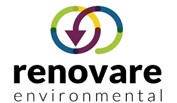Cash Flows
Cash flows used in operating activities — Cash used in operating activities for the year ended December 31, 2021 of $6,846,192 decreased by $1,912,014 (22%) from $8,758,207 for the year ended December 31, 2020. For the year ended December 31, 2021, the net loss of $24,323,475 was offset by non-cash impairments of $11,704,488, depreciation and amortization of $2,012,344, interest resulting from amortization of financing costs and discount of $2,178,007 and other net non-cash adjustments to reconcile net loss of $176,305 and a source of cash of $1,406,139 resulting from changes in operating assets and liabilities. For the year ended December 31, 2020, the net loss of $15,741,839 was offset by non-cash impairments of $975,420, depreciation and amortization of $2,307,495 and other net non-cash adjustments to reconcile net loss of $2,586,872 and a source of cash of $1,113,845 resulting from changes in operating assets and liabilities.
Cash flows used in investing activities — Cash used in investing activities for the year ended December 31, 2021 of $266,922 decreased by $749,728 (74%) from $1,016,650 for the year ended December 31, 2020. The decrease was primarily the result of a $650,000 investment in an affiliate entity in 2020 and a decrease in the costs deferred in MBT facility development costs of $118,554.
Cash flows from financing activities — Cash from activities for the year ended December 31, 2021 of $6,745,844 decreased by $4,393,781 (39%) from $11,139,625 for the year ended December 31, 2020. While the proceeds from common stock offerings were consistent between the years, during 2021 the Company repaid $1,725,000 on the Company’s senior debt and $83,450 on the Company’s notes payable to EntsorgaFin S.p.A., and in 2020, the Company had proceeds of $1,560,450 from the sale of preferred stock, $421,300 from a Payroll Protection Program note and net advances from a related party of $725,000.
CRITICAL ACCOUNTING POLICIES AND ESTIMATES
Use of Estimates — The preparation of consolidated financial statements, in conformity with GAAP requires the extensive use of management’s estimates and assumptions that affect the reported amounts of assets and liabilities and disclosure of contingent assets and liabilities at the date of the financial statements and the reported amounts of revenue and expenses during the reporting periods. Actual results could differ from these estimates. Estimates are used when accounting for items and matters including, but not limited to, valuation of deferred tax assets, share based compensation, allowance for uncollectible accounts receivable, obsolete, slow moving and excess inventory, asset valuations, including intangibles, and contingencies.
Product and Services Revenue Recognition — The Company records revenue based on a five-step model in accordance with ASC 606, Revenue from Contracts with Customers, which require that we: 1.Identify the contract with a customer; 2. Identify the performance obligations in the contract; 3. Determine the transaction price of the contract; 4. Allocate the transaction price to the performance obligations in the contract, and; 5. Recognize revenue when the performance obligations are met or delivered.
When revenue is earned based on product sales, such as sales of digester equipment and parts, solid recovered fuel and recycled materials, the Company’s performance obligations are satisfied at the point in time when products are shipped to the customer, which is when the customer has title and control. Therefore, the Company’s contracts have a single performance obligation (shipment of product). The Company primarily receives fixed consideration for sales of products. When revenue is earned on services, such as digester maintenance and repair services fees are recognized over the period the services are performed based on service milestones.
Lease Revenue Recognition — Rental, service and maintenance revenues relating to the Company’s rental agreements involve providing use of the Company’s digesters at customer locations, access to our software as a service and preventative maintenance over the term. The agreements generally provide for flat monthly payments that the Company believes are consistent with our costs and obligations underlying the agreements.
The Company selected the practical expedient not to separate non-lease components from lease components. The Company recognizes revenue from the rental of the digester units ratably on a monthly basis over the term of the lease, as it has determined that the rental agreements entered into in connection with its digester units qualify as operating leases, for which the Company is the operating lessor. In order to determine lease classification as operating, the Company evaluates the terms of the rental agreement to determine if the lease includes any provisions which would indicate sales type lease treatment.
Long-Lived Assets — The Company assesses its long-lived assets, including definite-lived intangible assets, plant, property and equipment, which are held and used in our operations for impairment if events or changes in circumstances indicate that the carrying
